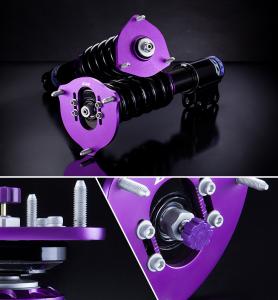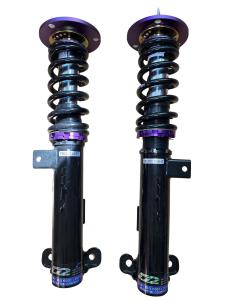The Best Coilovers for Street and Track Applications
The Best Coilovers for Street and Track Applications
Blog Article
Adding Coilovers on your car can considerably boost the experience quality, handling, and overall performance of one's vehicle. If you're seeking to enhance your operating knowledge, that information can walk you through the measures to put in coilovers properly while ensuring protection and functionality.
What Are Coilovers?
Coilovers are a mix of a coil spring and shock absorber, stored together as you component. They let vehicle fans to adjust the ride level, rigidity, and damping of the car, making them a popular change for both street and monitor use. Prior to starting the installment, guarantee you've picked the correct coilovers designed to your car or truck make and model.

Methods You'll Require
Before beginning, get the necessary resources to make the method efficient and secure:
Jack and jack stands
Torque wrench
Plug collection
Spring compressors (if needed)
WD-40 or a rust penetrant
Plastic mallets and screwdrivers
Double-check your vehicle's specifications and make sure you have every thing required to complete the job.
Step-by-Step Guide to Adding Coilovers
1. Make Your Vehicle
Start by parking your vehicle on a flat, secure surface. Interact the parking brake and ensure the port stands are securely set up to prevent accidents during installation. Lift the vehicle using a hydraulic jack and eliminate the wheels at all four corners.
2. Take away the Old Suspension
Making use of your socket collection, find the products keeping your present bangs, struts, and rises in place. Use rust penetrant if screws appear hard to loosen. After the products are eliminated, you need to be able to extract the suspension components carefully. Hold elements structured in the event you require to appear back for reference.
3. Mount the Coilovers
Arrange the growing details of the coilovers with the supports in your car. Secure them in place utilizing the products provided by the manufacturer. Make sure to follow the torque specifications that come with the instructions; over-tightening or leaving screws free can bargain safety.
4. Alter Level and Preload
Most coilovers present change bands to set ride top and preload. Utilizing the presented instruments, manage the adjustments to your ideal measurement, ensuring enough clearance for driveability without reducing performance.
5. Check All Products and Contacts
Before finishing up, go over every secure and connection to ensure they are secure. A loose secure throughout function could result in significant problems on the road.
6. Reinstall Wheels and Test Travel
When the coilovers are installed, position the wheels back on and decrease the car. Take the automobile for a quick test drive to familiarize your self with the newest setup. Hear for almost any uncommon disturbances and recheck bolts following the drive.

Fine-Tuning for Optimal Performance
The wonder of coilovers is their adjustability. Following installment, spending some time fine-tuning the stiffness, damping, and journey top to match your requirements, whether you prioritize track-level performance or a comfortable everyday drive.
Installing coilovers on your car is a worthwhile project that elevates equally look and performance. With this manual, you are able to confidently tackle the process and appreciate superior handling on every drive. Remember, security generally comes first, so spend some time, double-check every stage, and don't wait to consult a professional if needed. Happy operating!
Report this page